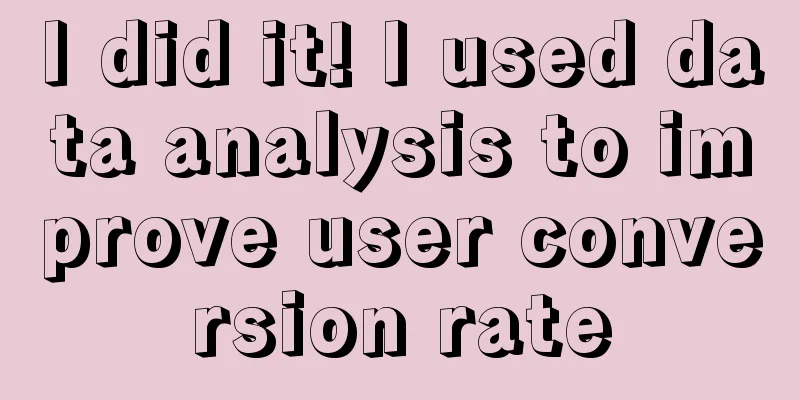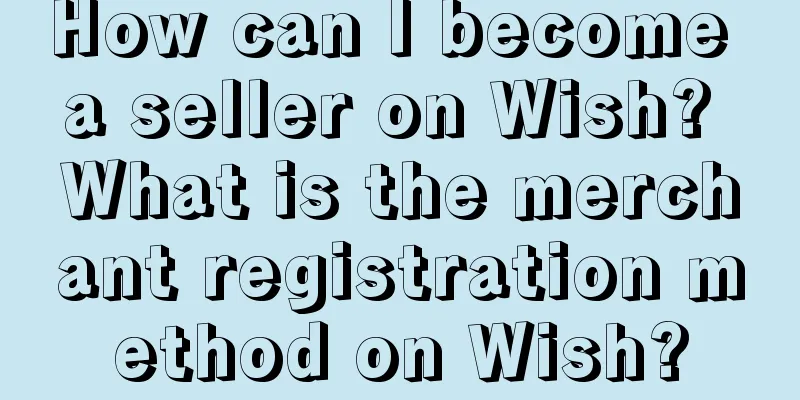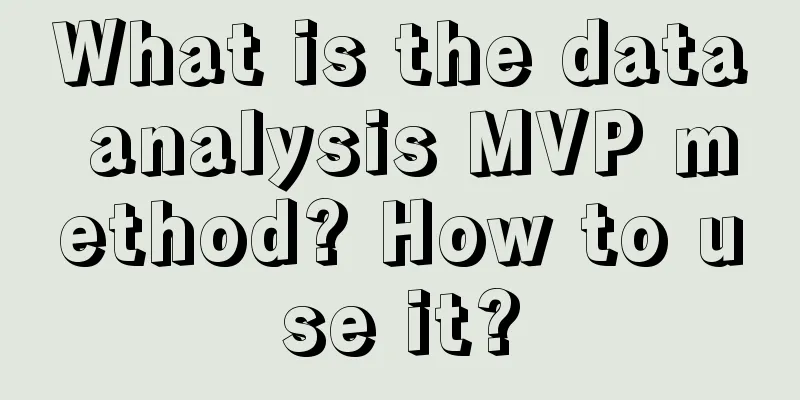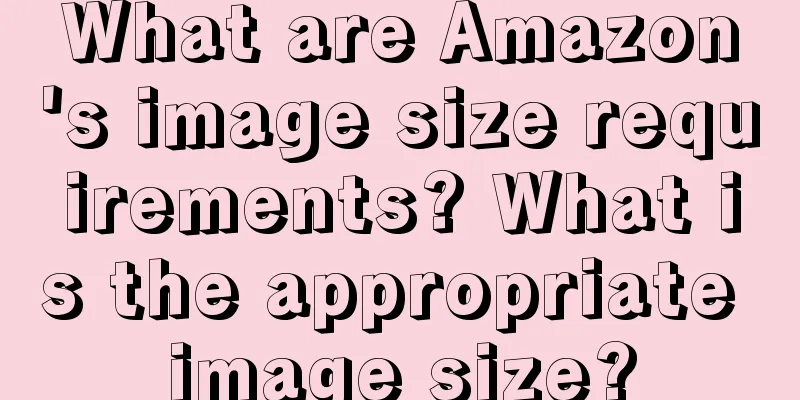In the next decade, brand mission will be more important than brand positioning

Positioning can create big brands, but it cannot create great brands. Great brands cannot be explained by positioning theory. For example, Apple, Tesla, OpenAI... These brands have one thing in common: they are not driven by positioning, but by mission. I call such brands "mission-driven brands." I want to make a seemingly absolute statement: in the next ten years, brand mission will definitely be greater than brand positioning. 1. Positioning vs. mission: mission is finally no longer just a sentence on the wallWhy is mission more important than positioning? We can use the theory of Peter Thiel, the author of "Zero to One", to explain this. Peter Thiel divides competition into horizontal competition and vertical competition. Horizontal competition means that all competitors compete for a fixed-capacity market at one level, while vertical competition is to jump out of the original competition dimension and create and lead a new market. Positioning is about teaching you how to win in horizontal competition. The concept of positioning was born in 1969. The reason for its birth was that society entered an era of commodity explosion and information explosion. The minds of users are crowded, and the competition track is also crowded. Positioning is to teach companies to find a blank spot in the minds of users, so as to win the competition. But whether it is finding a gap or taking the first place, it is to find opportunities in the existing market and the existing thinking of users. Therefore, the theory of positioning is essentially a competition-oriented stock thinking. What about mission? Simply put, mission is the reason for the existence of a company. Drucker has a saying that can well understand the mission of a company. He said: "The purpose of a company's existence is to solve social problems profitably." Compared with positioning, mission is more concerned with whether social problems have been solved. Whether there is a gap in the market depends on whether there are still problems in society. How big a market a company can win depends on the size of the problems it solves. Therefore, the mission is essentially for us to create social value and lead new markets, which is a typical incremental thinking. Horizontal competition and vertical competition may no longer be a choice for you, because once a competitor launches a vertical competition, your industry will be wiped out in a short time. For example, the emergence of ChatGPT may bring about a collapse in many industries: search, knowledge payment, online education, smart speakers, mobile phone input methods, translation software, paper websites, question-and-answer communities, software development… Don't think that this kind of thing only happens in some purely technical fields. This trend can be seen in many fields. Earlier this year, The Wandering Earth 2 once again pushed Chinese science fiction movies to international heights. But the "iron mantis", "engineering exoskeleton" and "mechanical dog" in the movie were not created by special effects, but were made in reality by a company called XCMG Group. You see, what subverted the pattern of science fiction movies was not better special effects technology, but "Made in China"! For example, in the field of office software, Feishu has largely replaced Office, but not because some of its functions are smoother than Office, but because Office is only personal office software, while Feishu is essentially an "online collaboration tool." Some companies with "vertical competition" capabilities will break the original horizontal competition market. This is the real competitive struggle point at the moment. If positioning is to help enterprises find a way to break through in the existing market, then mission is to drive enterprises to choose the difficult but correct route and enter the track of "vertical competition". In 2014, Lei Jun visited Musk in Silicon Valley and asked him, "Why did you choose to start Tesla 10 years ago? At that time, electric cars were not so popular and were sought after by so many people. How did you view this opportunity?" Musk replied: "I never thought this was a good opportunity. Its failure rate is much higher than its success rate. I just think this is something that should be done, and I don't want to wait for others to realize it." All mission-driven companies have this characteristic: they seem to be doing something that is not so smart. For example, Quanmianshidai only makes cotton products. Take cotton wipes for example. Compared with paper towels, cotton costs more, and many people don’t understand why they make more expensive cotton wipes. In the first four years of its establishment, they lost more than 200 million yuan. But now, their annual sales have exceeded 4 billion yuan. After replacing paper, chemical fiber and other products with natural and environmentally friendly cotton products, the market demand for cotton has increased, and some peers have also started to use cotton under their influence. In the past 10 years, the cultivated area of cotton in Xinjiang has increased by 53%, and large areas of desert have become oases. Positioning-driven companies seek to dominate an industry, while mission-driven brands seek to lead an industry and drive the development of the entire industry. You see, the social significance of positioning and mission are different. With positioning, you become better, but the world may not become better because of your goodness. But with mission, you become better, and the world becomes better. Moreover, with a mission, the brand will have blood, and it will be easier for you to drive consumers to make purchases. I believe that current consumption has entered the fourth era. It has evolved from previous consumption for filling, showing off, and self-pleasing to consumption for belonging. Consumption is no longer as simple as "pleasing oneself". Many times, we find answers to life and spiritual belonging through consumption. For example, a programmer rides a Harley to work every day, probably not because the Harley has good performance, but because the Harley represents his "unruly soul" and yearning for "poetry and distant places". Some people choose Sanya when traveling, while others choose Aranya. There is nothing right or wrong in the choice itself, but the leisure concepts behind them are different. People who go to Sanya may be looking for a place to relax and get away from the fast-paced life. People who go to Aranya arrive at an art community to experience life. Therefore, the mission is no longer just a sentence on the wall. The mission has "moved from virtual to real" and has become the engine of business operations. 2. How to correctly convey the brand mission?1. Real people and real stories: not only celebrity spokespersons, but also value spokespersonsThe easiest way to convey your brand mission is to find a spokesperson for your values. Many companies have their own celebrity spokespersons, but few have their own spokespersons for their values. To put it simply, a spokesperson is someone who speaks for the company. This person not only represents the company's temperament, but also should represent the mission and values that the company believes in. Your value spokesperson can be a celebrity, an industry expert, a die-hard user, a company founder, or a star employee. But they all have one thing in common: everything they do and think is consistent with the company's "three views". When we use spokespersons for our values to do marketing, we need to dig out their real stories and use their real life experiences and spiritual strength to represent our brand concepts. Because only when your values are spread by people who truly believe in them can users be convinced. Let's watch a documentary first: The protagonist of the film is Bai Xiangen, "China's first female seafarer to cross the Arctic Ocean." Her parents hoped that she would become a doctor, but she followed her heart and eventually became a captain. This video can resonate with the audience because it tells the true life story of a person. Because of its authenticity, many people see a part of themselves in Bai Xiangen. There are thousands of "her" in this world, who may change their fate because of a certain choice, or succumb to their fate because of a certain choice. Whether to change or succumb depends on the courage in her heart. All Cotton Times chose Bai Xiangen as its spokesperson for values because they have many things in common: Bai Xiangen is persistent in her inner choices and ultimately realizes her life ideals; All Cotton Times chooses to only make cotton, hoping to change the quality of life and the ecological environment with a flower of cotton. This series of documentaries consists of four episodes, from "the most beautiful village doctor" Luo Haixiang, "women's football coach" Shui Qingxia, "Beidou navigation system scientist" Xu Ying, to "female captain" Bai Xiangen, each story is a true story. These real life choices and real spiritual concepts, when projected onto the brand, will produce an emotional chemical reaction. 2. Real issues: not to promote concepts, but to gather similar onesPositioning is to instill a concept, while mission is to call on similar people. If a company firmly believes that what it does is valuable to society and to its users, you don't need to try to get users to accept a concept. You can easily find people who share the same beliefs as you. Finding a spokesperson for your values is like finding an evangelist for your company. The next step is to tap into social issues that the public is concerned about and further amplify your influence. But remember, a mission-driven brand should focus on real social issues, not fun social topics. Let’s first distinguish between social issues and social topics. Marine plastic pollution, the third child policy, left-behind children in rural areas, single-child families, 996... these are social issues. Social issues refer to things that we really care about in real society but have not been well resolved. These issues will be discussed to a certain extent online. Going to Sanlitun to pick up trash on Valentine's Day, the most impressive puppy in China, how hot the cooking of tangerine peel is, these are called social topics. Social topics are more like the topics we talk about after dinner, which are often a gust of wind. Discussing these issues cannot help us solve the various difficulties in real life. To put it simply, social issues are the questioning and exploration of real society, while social topics are just jokes about real society. When companies care about social issues, they are caring about the world and want to change it. However, when companies create social topics, they are just using the materials of the world for marketing and consuming the world. Therefore, when a company is working on a social issue, it can use the attention paid to the social issue to gather people who share the same beliefs as it. The documentary series "She Changed" is actually about discussing relevant social issues through the life experiences of four women, such as how women can choose their own life dreams and how women can break gender bias in the workplace... Instead of instilling product selling points into users, they use these topics to instill the brand’s philosophy into users. When brands blend their values into social issues, audiences who are concerned about these issues will spontaneously gather and discuss. Therefore, correctly conveying the mission is not to push a concept rigidly, but to discover, find, and gather people like you through the values you believe in. When people with similar values gather together, they will form a circle, a camp of values, and become a force that can change the world. A truly mission-driven company will not initiate social issues simply to catch the social hot spots. They will not change social issues at will for the sake of creativity. The issues they focus on are often those they have advocated for many years. Because the purpose of companies focusing on social issues is not to please the public, but to resonate with the public. For example, Dove discovered that women would feel inferior because of their body shape and appearance, so it launched the "Real Beauty Campaign" to encourage women to discover true beauty. This campaign has been running for 20 consecutive years. As long as social problems persist, the issues advocated by companies should continue. With your leadership, more and more people will be committed to changing social problems. 3. Real action: bring about change through action, not just slogansFor most brands, getting users to consume is the goal, and brand mission is just a means. But when you do this, users can easily find that your mission is just empty talk. For mission-driven brands, achieving the mission is the ultimate goal, and getting users to consume is just a natural result. In order to convince users of your brand mission, you can’t just shout slogans, you must prove with actions that you will do what you say. If parents teach their children to go to bed early and get up early, then they cannot lie in bed and play with their mobile phones after turning off the lights; if leaders want their employees to work hard, then they must set an example themselves. Slogans may temporarily "lift people's spirits", but actions can bring about real change. When a brand is conveying certain values, it cannot just shout slogans, but also use actions to involve users. The concept advocated by LEGO is "learning through play", and their promotion logic is to act together with the players. They have a platform called LEGO Ideas, where players upload their ideas, and as long as many people like them, they may be made into products. For many children, LEGO is not just a toy, it represents the imagination and creativity of children to explore the unknown. Therefore, as a mission-driven brand, you should not only continue to instill your values into users, but also invite more like-minded people to participate. Only when people's awareness and actions are in sync, "mission must be achieved" will become a natural thing. Over the years, Pure Cotton Times has issued about 14.08 million eco-friendly shopping bags made of cotton to users. When you go to a store to buy something, the clerk will not give you a plastic bag, but a cotton non-woven shopping bag. Compared with many high-profile brand activities, their action seems very "small", but the meaning behind it is profound. Since the brand was founded, Quanmianshidai has been creating content related to cotton culture. In addition to the documentary IP "She Changed", they also made a documentary "What is Cotton" to trace its origins, and held the "Cotton. Nature. People" theme exhibition for 8 consecutive years. Cotton culture promotion has changed users' perception of cotton, and the seemingly "inconspicuous" shopping bag connects consumers' actions, allowing them to participate and feel the benefits of cotton with their skin and body. Many users said that they started to use less plastic in their lives after getting used to cotton. Therefore, "All cotton changes the world" is not only a slogan for them, but also an action summary of their mission. In my opinion, spending hundreds of millions on an event marketing and sparking a wave of national interaction is not really fulfilling your mission, because your actions may not bring any real changes to the world. Using "small actions" that moisten things silently to permeate your values and change consumers' consumption habits in the long term is the real fulfillment of your mission. ConclusionPositioning can help you break through the competition, but mission can take you further. Compared with the winners of the competition, the future market will definitely welcome those who take social responsibilities. Author: General Liang Source: WeChat public account "General Liang (ID:liangjiangjunisme)" |
<<: Short dramas on the Internet: from long to short, from short to micro
>>: 100 Keyword Predictions for 2023 | Culture (01-10): Vitality, Strength and Excitement
Recommend
With annual revenue exceeding 20 billion and tens of millions of fans across the entire network, how does the national snack brand "Want Want" develop its private domain?
This article mainly analyzes the traffic matrix, p...
Taylor Swift speaks Chinese, will this lead to a major change in marketing?
This article starts with the recently popular &quo...
It is popular among primary school students to wear bracelets. What do you think about it?
Recently, the hot topic of "playing with hand...
BYD's counterattack gives new consumer brands 0-1 experience
How can a brand establish a good image in the face...
What does Amazon's natural order mean? How to distinguish it from an advertising order?
Amazon is a cross-border e-commerce platform that ...
Can JD.com’s “Dark Moon and Strong Winds” pave the way for Double Eleven?
JD.com launched the "Dark and Windy" eve...
How to ship Gmarket from South Korea to China? Where to transfer logistics from South Korea to China?
More and more people are choosing to look for more...
After three years of live streaming of house selling, has Kuaishou “got the hang of it”?
Is online house selling a good business for traffi...
Read pure love on Xiaohongshu, and identify scumbags on Douyin
Follow the sweet pure love stories on Xiaohongshu,...
How to promote on Amazon? What are the methods?
If we open a store on Amazon, we have to promote t...
Attracting merchants and live streaming competition, this Double 11 starts to win the platform
From early promotions to live streaming competitio...
Super-sized snack packages are popular, and young people are controlled again
This article mainly discusses the phenomenon of su...
The number of followers increased by nearly 2 million in 7 days, and the GMV of goods sold was close to 100 million. How did this female anchor become so popular?
Does Douyin e-commerce have a new top live streame...
Xianyu increases its service fee, whose business is being affected?
Xianyu recently announced that it will charge sell...
Why shopping makes people anxious
As the end of the year approaches, there are more ...









